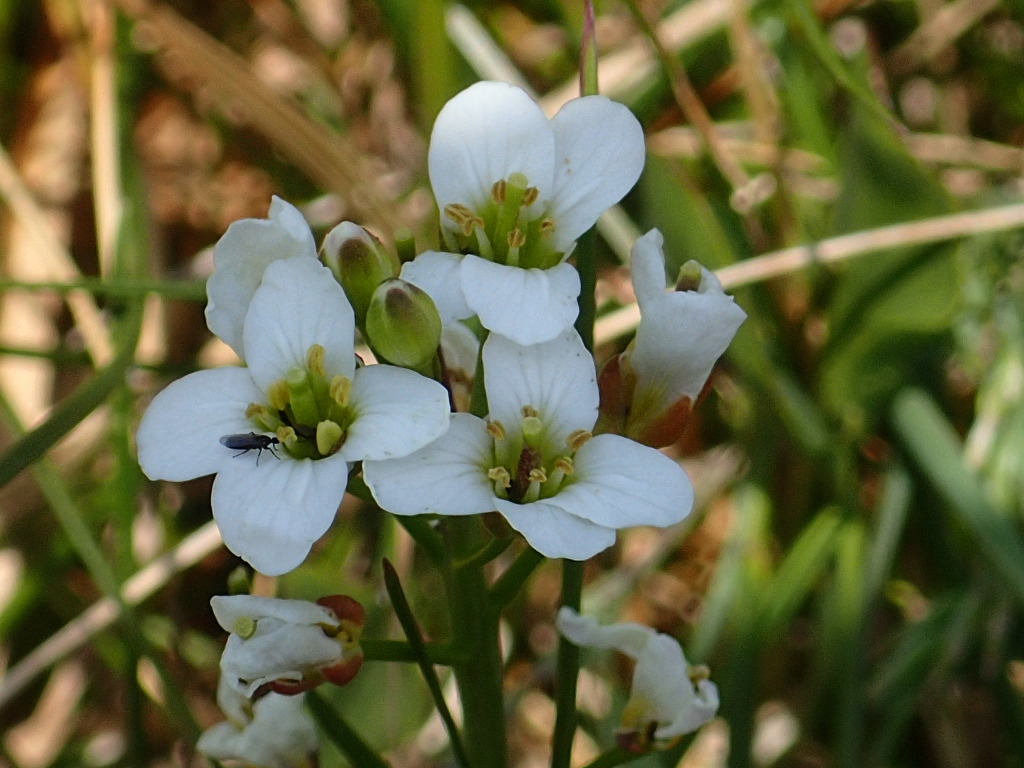Cardamine astoniae
I.Thomps.Glabrous perennial, to 30 cm high; vegetative stems long, growing horizontally above ground, rooting at nodes, occasionally branching, the stem turning upwards to produce an erect, usually unbranched flowering stem. Basal leaves arising singly along stem, sometimes a few clustered at base of flowering stem, to 15 cm long, usually simple and ovate, sometimes with 1–2 lateral pinna pairs; cauline leaves to 6 cm long, pinnate to pinnately divided with the pinnae directed forwards. Raceme many-flowered; sepals 3–4 mm long; petals 6–11 mm long, white or pink; style 1–3 mm long. Fruits erect, 20–30 mm long, 2–2.5 mm wide; pedicels 10–20 mm long; seeds 1.5–2.0 mm long. Flowers summer.
VAlp. Also in NSW, Tas. Apparently an uncommon species, growing amongst Poa, Empodisma or Sphagnum moss in alpine and subalpine areas (e.g. Falls Creek area, Bucketty Plain, Nunniong Plateau, Mt Loch). The horizontal stems creep through the litter layer or peat, with the basal leaves often rising through other vegetation.
Previously included in Cardamine lilacina. A single collection, from a site below the summit of Mt Bogong, has a similar habit and similar sized flowers to C. astoniae, but differs in having thicker stems, shorter internodes and more frequent branching. Its taxonomic status requires further investigation.
Thompson, I.R. (1996). Cardamine. In: Walsh, N.G.; Entwisle, T.J., Flora of Victoria Vol. 3, Dicotyledons Winteraceae to Myrtaceae, pp. 434–442. Inkata Press, Melbourne.
 Spinning
Spinning
